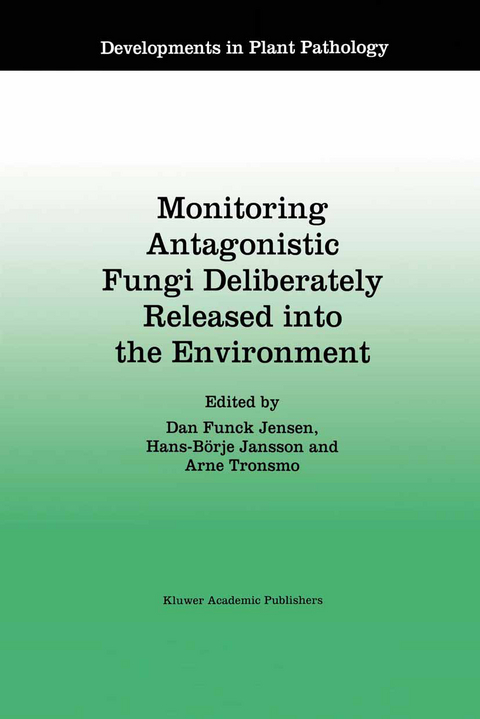
Monitoring Antagonistic Fungi Deliberately Released into the Environment
Springer (Verlag)
978-94-010-7260-1 (ISBN)
Monitoring of antagonistic fungi. Perspectives, needs and legislation.- Fungal Ecology.- Some aspects of fungal ecology.- Quantification of fungal growth in the environment.- Population growths and survival of Trichoderma harzianum and Trichoderma virens in sphagnum peat.- Occurrence of Gliocladium roseum on barley roots in sand and field soil.- Use of a metalaxyl tolerant Pythium oligandrum isolate for selectively following its population in soil and its colonization of roots of diseased and non-diseased plants.- Recovery and detection of deuteromycete conidia from soil.- The prevalence of Fusarium solani in wrinkled and roundseeded pea genotypes.- Release of a cord-forming basidiomycete antagonistic to Heterobasidion annosum and its subsequent reisolation and identification.- Methods to quantify nematophagus fungi in soil: Microscopy or GUS gene activity.- Monitoring of a GUS transformed strain of Trichoderma harzianum in soil and rhizosphere.- Monitoring growth of Bipolaris sorokiniana in plant tissue using GUS (?-glucuronidase) as a marker.- Secondary Metabolites and Enzymes.- Identification of fungi by secondary metabolites.- Prehelminthosporol, a Phytotoxin from Bipolaris sorokiniana.- Monitoring the activity of different Trichoderma isolates by the isoelectric points (pI) of their extracellular enzymes.- DNA-Technioues.- PCR-based methods — a promising tool for detection and identification of fungi in soil.- Identification and characterization of isolates of Trichoderma and Gliocladium by PCR-based methods.- Identification of nematode-trapping fungi of the genus Arthrobotrys using RFLP analysis of PCR-amplified rDNA.- Cloning and characterization of Trichoderma harzianum genes induced during growth on Rhizoctonia solani cell walls.- Serological Methods.-Development of immunoassays for the detection and quantification of fungi.- Development of monoclonal antibody-based immunoassays for the quantification of Rhizoctonia solani and Trichoderma harzianum in soil.- Group Discussion in Plenum.- Non disruptive in situ detection methods.- Techniques for monitoring Trichoderma in the phyllosphere.
| Reihe/Serie | Developments in Plant Pathology ; 8 |
|---|---|
| Zusatzinfo | XVI, 171 p. |
| Verlagsort | Dordrecht |
| Sprache | englisch |
| Maße | 160 x 240 mm |
| Themenwelt | Naturwissenschaften ► Biologie ► Botanik |
| ISBN-10 | 94-010-7260-4 / 9401072604 |
| ISBN-13 | 978-94-010-7260-1 / 9789401072601 |
| Zustand | Neuware |
| Informationen gemäß Produktsicherheitsverordnung (GPSR) | |
| Haben Sie eine Frage zum Produkt? |
aus dem Bereich


